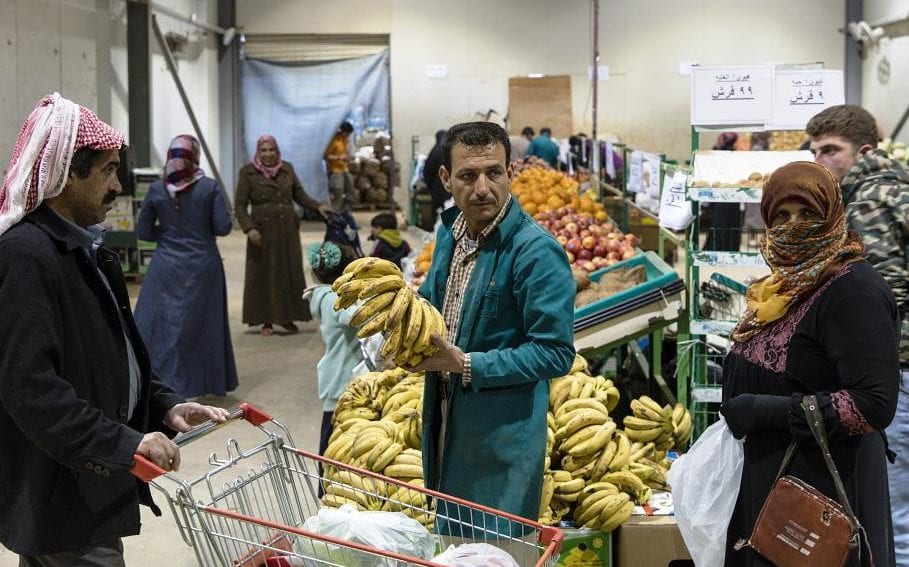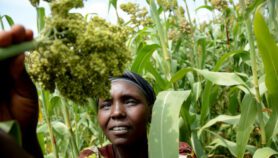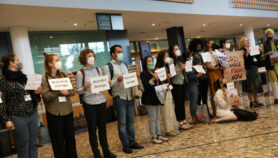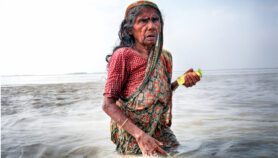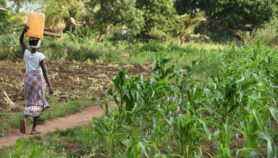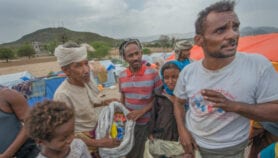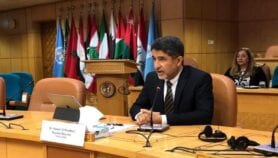By: Najat Shana
Send to a friend
The details you provide on this page will not be used to send unsolicited email, and will not be sold to a 3rd party. See privacy policy.
[AMMAN] The World Food Programme has begun to review its food aid distribution strategy for Syrian refugees in Jordan after results of a field study, released last month, that indicate they prefer to receive assistance in cash, not in-kind.
Ghazwan al-Miqdad, aged 37, and his family of six, is one of the refugees who believes that receiving cash would be better than the current system: he complains of high prices at WFP-accredited supermarkets, as well as the fact that aid is limited to a specific type of food items.
‟We find ourselves forced to buy what we might need over a long period, twice a month. This means some of the products we buy can never be fresh, which would not be the case if we were able to buy them according to our daily needs,” al-Miqdad told SciDev.Net.
“We will start implementing it outside the camps gradually, and then inside the camps.”
Shaza Moghrabi
Jordan hosts thousands of Syrian refugees — the number reached 660,000 by the end of May 2017 — 93 per cent of which are below the poverty line, according to the UN High Commissioner for Refugees (UNHCR).
The WFP recently tested three food mechanisms for people who live outside refugee camps, using a sample of 3,000 Syrian refugees out of 532,000 who benefit from WFP aid in Jordan. The study was conducted over a period of eight months, according to Shaza Moghrabi, WFP spokesperson in Jordan.
The participants were split into three groups, and each was given a different option. Refugees in the first group were able to use debit cards to purchase food from 200 accredited supermarkets. The second group was given the opportunity to withdraw money in cash on a monthly basis through ATMs, provided that they purchase from the same 200 supermarkets. The third category was granted freedom to spend the cash from any food shop, whether or not it was accredited.
The results revealed that the group able to spend cash to buy food from any supermarket was the one most satisfied with the aid mechanism, both with regard to food prices and how easily they could meet their needs.
‟We aim for the best methods to secure refugees’ food,” says Moghrabi.
Inside camps, the WFP has introduced a mechanism that doesn’t require refugees to carry a debit card for shopping. Instead, they can pay through an eye scan — a technology tested in a number of camps for the first time in the history of humanitarian assistance.
After scanning the eye of the shopper, the system automatically links up with UNHCR records to confirm the identity of the refugee. It then contacts the Jordanian National Bank to determine the remaining balance of the refugee, before confirming the purchase.
Explaining how aid has evolved over the years, Moghrabi added that the WFP has been providing food for refugees inside and outside camps in Jordan through food parcels since 2012. In September 2013, it began to use food vouchers that offered each person a fixed monthly amount to spend on food. Yet, these methods did not appeal to refugees.
Unlike vouchers, the new mechanism of food aid via debit cards offers the advantage of giving refugees the freedom to choose foods from supermarkets, according to Moghrabi. And the eye scan technology used inside the camps makes it easier to shop without worry of having identification papers stolen or lost.
Yet, Lamia, a refugee in her 30s living in Zaatari camp, shares al-Miqdad’s opinion, complaining that because this technology is limited to certain supermarkets, it holds refugees hostage to their prices.
Moghrabi acknowledges that WFP-accredited supermarkets can be more expensive than wholesalers, for example. For this reason the programme’s field team monitors WFP supermarkets to make sure they don’t raise their prices compared with other markets.
Speaking to SciDev.Net about reservations behind introducing a cash-based mechanism, she points out that ‟WFP was concerned that the refugees’ food level would be affected if cash was given instead of vouchers”.
However, the results of the field study showed that about 95 per cent of cash assistance was spent on food needs. They also indicated that purchasing power improved as refugees were able to buy at lower prices from non-accredited places close to their home.The cash-based programme will be implemented soon, says Moghrabi, and the amount allocated monthly for each refugee will not exceed what the WFP considers necessary to meet food requirements.
‟We will start implementing it outside the camps gradually, and then inside the camps,” she said, adding that the programme will review each stage of implementation as well as how the service develops.
This piece was produced by SciDev.Net’s Middle East & North Africa desk.


